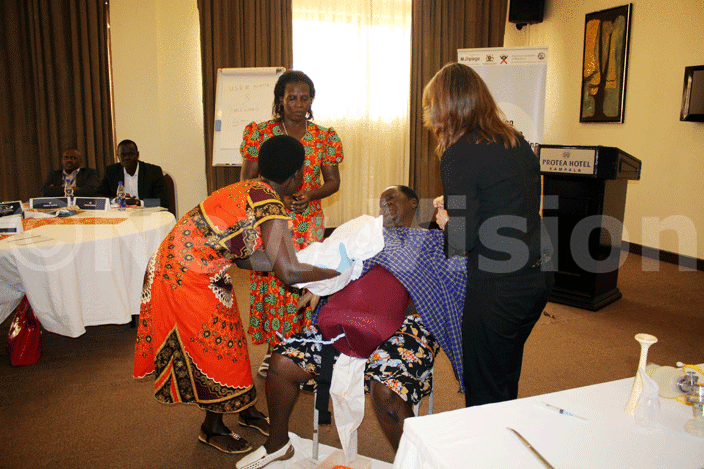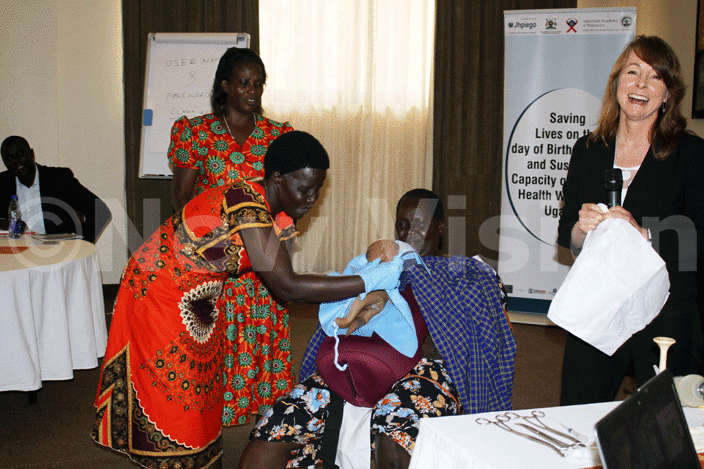602 medics trained in reduction of maternal-child deaths
Apr 28, 2016
Skills the frontline health workers learnt included preparation of essential items before birth as well as the care and drugs a mother should receive within a minute of birth to prevent haemorrhage.

A total of 602 frontline heath workers have been trained on how to reduce the rate of postpartum haemorrhage (over bleeding after birth) and birth asphyxia (suffocation), two major causes of death of mothers and babies during and after birth.
Skills the frontline health workers learnt included preparation of essential items before birth as well as the care and drugs a mother should receive within a minute of birth to prevent haemorrhage.
This was during a three-year study carried out in 126 health facilities aimed at reducing maternal and newborn mortality through the Helping Mothers Survive/Bleeding After Birth (HMS) and Helping Babies Breath (HBB) training programmes.

Officials from the Ministry of Health, donors, non-government organisations, district health officials and university researchers, among others attended the national dissemination meeting in Kampala recently.
Speaking during the meeting, Emily Katarikawe, the executive director of JHPIEGO Uganda, explained that the results were achieved by employing a training model that is team and facility-based as well as focused on remote health facilities, which helps learners retain the skills learnt.
"Such ways include the use of interactive techniques that engage the learner, provide opportunities for stimulated practice, and learning opportunities planned and delivered at an appropriate dose and frequency," Katarikawe said.
Adding: "In order to address these two killers, (postpartum haemorrhage and birth asphyxia), there is need to build the capacity of all health providers who may be present at the time of birth, ensuring they have the skills to prevent and rapidly respond to either or both of these complications.
With these skills, the health workers reduced postpartum haemorrhage by 17% and retained placenta by 47%. In addition, there was also a 34% reduction in fresh stillbirths and 62% reduction in newborn mortality within 24 hours in the districts where the project was implemented.

The training was carried out in hospitals and health centres in 12 districts in eastern and western Uganda.
The districts include Bukedea, Kaberamaido, Namutumba, Ngora, Serere, Soroti, Ibanda, Kanungu, Kiryandongo, Kisoro, Rukungiri and Sheema.
The study under the theme: "Saving lives on the day of birth" was funded by Saving Lives at Birth Consortium together with JHPIEGO, an international, non-profit health organisation and the Ministry of Health.
According to statistics, Uganda's maternal mortality ratio stands at 435 per 100,000 live births. Maternal mortality ratio is the number of women dying during or shortly after delivery per 100,000 live births.
The maternal mortality rate is the number of deaths of women per 100,000 live births from any cause related to or aggravated by pregnancy or its management (excluding accidental or incidental causes).
According to the 2008 Uganda Demographic Health survey, the death of mothers was due to hemorrhage (26%), sepsis (22%), obstructed Labour (13%), unsafe abortion (8%) and hypertensive disorders in pregnancy (6%), among others.
